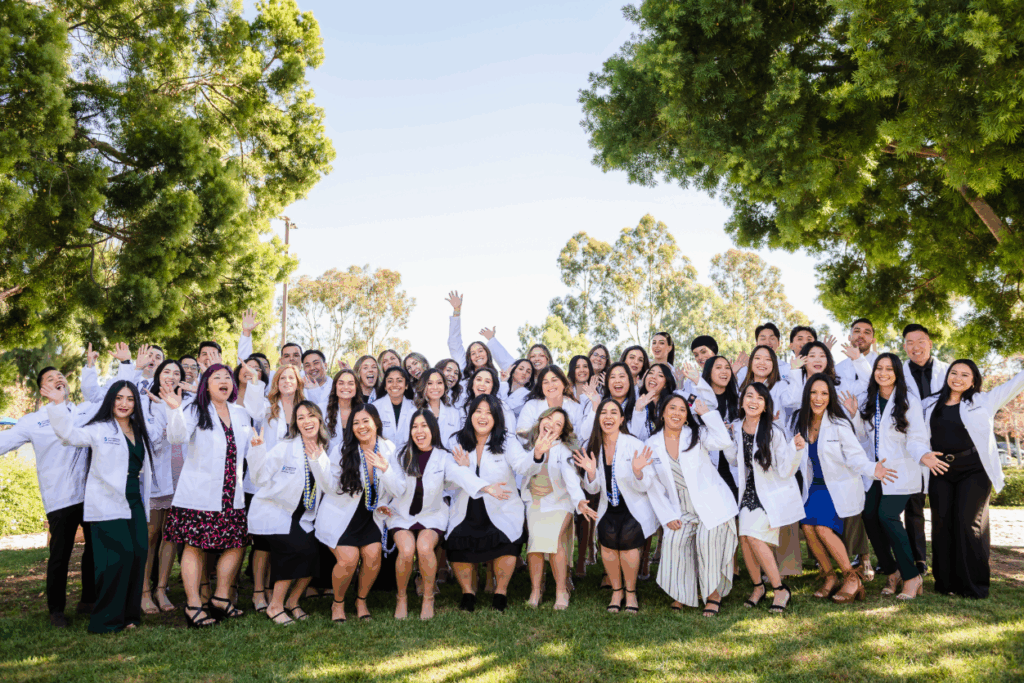OTA & MSOT vs. PTA: Exploring the Key Differences Between These Careers

What is the difference between occupational therapy and physical therapy? Occupational therapy (OT) helps people gain or regain independence in daily life¹ while physical therapy (PT) focuses on strength, mobility, and physical recovery.² Occupational Therapy Assistants (OTA) work under licensed OTs to guide activities and treatment,³ while Occupational Therapists (MSOT) check patients and design care plans.¹ Physical Therapist Assistants (PTA) support patients with exercises and mobility training under the supervision of licensed PTs.⁴ Each path requires special training: Stanbridge University offers the OTA program (about 22–23 months), the MSOT program (26–27 months), and the PTA program (20–21 months).⁵
What is the difference between occupational therapy and physical therapy? At first, they may look alike. Both fields help people recover and live better. However, their focus is not the same. When you look a little closer, you’ll see that each profession has its own strengths and approach to patient care.
You may be drawn to occupational therapy if you want to help people regain their ability to perform daily tasks.¹ On the other hand, if helping people move better and get stronger inspires you, physical therapy could be the right fit.² Either way, both fields give you the chance to improve lives every day.
This blog post explains the differences between an occupational therapist and a physical therapist. We’ll compare the training, responsibilities, and workplace settings of OTAs, OTRs, and PTAs. By the end, you’ll have a clearer view of which path may align with your goals.
What Is the Difference Between Occupational Therapy and Physical Therapy?
Occupational Therapy (OT): Occupational therapists and OTAs help people regain the ability to perform daily activities. For example, they may suggest subtle changes to a person’s surroundings, show new ways to do tasks, or guide someone as they relearn skills for self-care, work, or school.1,3
Physical Therapy (PT): Physical therapists and PTAs focus on restoring movement, strength, and mobility. That is, they help patients recover after injury or illness, manage pain, and improve overall physical performance.2,4
Both careers play an important role in rehabilitation. However, the differences between an occupational therapist and a physical therapist come down to focus: OTs work on daily living tasks, while PTs focus on physical function.

OTA, MSOT, and PTA: Roles and Responsibilities in Patient Care
- Occupational Therapy Assistants (OTAs): OTAs work directly with patients under the supervision of licensed occupational therapists. In this role, they guide therapeutic activities, support treatment plans, and encourage patients in settings such as hospitals, schools, and rehabilitation centers.³
- Occupational Therapists (MSOT): OTRs often take on a leadership role in patient care. They check patients, design treatment plans, and supervise OTAs. In addition, they work together with families and other healthcare professionals to build complete care plans.¹
- Physical Therapist Assistants (PTAs): PTAs work under the supervision of licensed physical therapists. They help patients with exercises, stretching, and other treatments that improve mobility. They also track progress and share updates with the physical therapist.⁴
Education Pathways: OTA, MSOT, and PTA Training Programs
Each career path requires special training, and program length and focus are different.
- OTA Program at Stanbridge University: The Occupational Therapy Assistant program takes about 22–23 months to finish.⁵ Students learn in classrooms, practice in labs, and gain experience through supervised fieldwork in clinics.
- MSOT Program at Stanbridge University: The Master of Science in Occupational Therapy program usually takes 26–27 months.⁵ Students build skills through classwork, advanced labs, and fieldwork. They also prepare for the national NBCOT certification exam.
- PTA Program at Stanbridge University: The Physical Therapist Assistant program takes about 20–21 months.⁵ Students learn key skills in class and labs. They also complete clinical training in healthcare settings, where they practice working directly with patients under supervision.

Work Settings: Where Do Occupational Therapy and Physical Therapy Professionals Work?
Both occupational therapy and physical therapy professionals work in diverse healthcare settings:
- OT & OTA: Hospitals, schools, rehabilitation centers, community programs, and mental health facilities.1,3
- PT & PTA: Hospitals, outpatient clinics, sports facilities, and nursing care centers.2,4
There is some overlap between the two fields. To begin with, occupational therapy often focuses on adapting environments and teaching methods that help people live more independently. Physical therapy, on the other hand, puts more emphasis on restoring strength and improving movement.
OTA & MSOT vs. PTA: Which Career Path Is Right for You?
Your choice between OTA, MSOT, and PTA depends on your goals. If you want to help people with daily tasks and enjoy problem-solving, the OTA or MSOT path may be a good fit. On the other hand, if you’re more interested in movement and recovery, PTA may be the right choice. No matter which path you choose, each offers a career where you can support others, grow your skills, and make a real impact.
Choosing Your Path: Understanding the Difference Between Occupational Therapy and Physical Therapy Careers
So, what is the difference between occupational therapy and physical therapy? Occupational therapy focuses on helping people stay independent in their daily lives.¹ Physical therapy, on the other hand, centers on improving movement and building strength.² Both the OTA/MSOT and PTA programs at Stanbridge University provide accredited training. They also include hands-on labs and clinical experiences that help students get ready for their chosen careers.
Ready to take the next step? Check out the Occupational Therapy Assistant, Master of Science in Occupational Therapy, and Physical Therapist Assistant program pages to learn more. You can also connect with us directly for one-on-one guidance as you plan your future.
Stanbridge University offers a range of healthcare degree programs across its Southern California campuses in Irvine, Alhambra, Riverside, and San Marcos. The university has been recognized for both academic excellence and workplace culture, including recognition in the 2025 Carnegie Classifications as an Opportunity College⁶ and in Research.com’s 2024 Best Healthcare Degree Programs in America.⁷ Stanbridge is accredited by Investors in People (London) and certified as a Great Place to Work.⁸
Frequently Asked Questions
OTAs and MSOT graduates focus on independence in daily living tasks. PTAs and PTs emphasize restoring mobility and physical recovery. OTAs work under the direction of licensed OTs, while MSOT graduates become licensed OTRs who evaluate and design treatment plans. PTAs assist PTs with exercises and mobility care.1,2,3,4
Neither is “better” overall. It depends on your goals. If you want to help people adapt to daily tasks, occupational therapy may be the right fit. If you’re passionate about strength and mobility recovery, physical therapy could be the path for you. Both offer rewarding careers.
The OTA program takes about 22–23 months, the MSOT about 26–27 months, and the PTA about 20–21 months at Stanbridge University.5 Each combines classroom learning, labs, and clinical training.
Footnotes
1Bureau of Labor Statistics, U.S. Department of Labor, Occupational Outlook Handbook, Occupational Therapists. https://www.bls.gov/ooh/healthcare/occupational-therapists.htm. Viewed September 2025.
2Source: Bureau of Labor Statistics, U.S. Department of Labor, Occupational Outlook Handbook, Physical Therapists, https://www.bls.gov/ooh/healthcare/physical-therapists.htm. As viewed on September 8, 2025. (bls.gov)
3Bureau of Labor Statistics, U.S. Department of Labor, Occupational Outlook Handbook, Occupational Therapy Assistants and Aides. https://www.bls.gov/ooh/healthcare/occupational-therapy-assistants-and-aides.htm. Viewed September 2025.
4Source: Bureau of Labor Statistics, U.S. Department of Labor, Occupational Outlook Handbook, Physical Therapist Assistants and Aides, https://www.bls.gov/ooh/healthcare/physical-therapist-assistants-and-aides.htm#tab-2. As viewed on September 8, 2025.
5Program duration subject to change. Completion times vary depending on the start and end dates of a cohort and individual circumstances.
6Source: https://carnegieclassifications.acenet.edu/institution/stanbridge-university/. As viewed on May 21, 2025.
7Source: Research.com, 2024 Best Healthcare Degree Programs Ranking in America, https://research.com/rankings/healthcare/best-healthcare-usa/?award=f3d66c8ef200b579. Email communication from Chief Data Scientist and Ranking Editor, Imed Bouchrika, Ph.D. to Director of Marketing, Victoria Sauer. As viewed on December 12, 2024.
8Source: Investors in People. https://www.investorsinpeople.com/. As viewed on June 13, 2025.